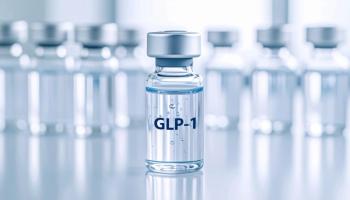
- September 2012 Oncology
- Volume 79
- Issue 9
Living with Cancer
Pharmacists can close the information gap for patients with cancer at every stage and provide valuable counseling and support.
Pharmacists can close the information gap for patients with cancer at every stage and provide valuable counseling and support.
Cancer is the second-most common cause of death, following heart disease.1 Approximately 12 million Americans, or 4% of the population, are cancer survivors today—a sharp increase from 1971, when only 3 million cancer survivors existed. Survivorship is defined by the National Cancer Institute as the duration from the time individuals are diagnosed through the balance of their lives.1,2
Living with cancer presents major challenges, which differ for 4 phases of the disease: (1) new diagnosis, (2) active treatment, (3) end stage, and (4) long-term survivorship and remission (survival of 5 years or more following diagnosis). Despite cancer’s prevalence, few large-scale studies address patients’ psychosocial needs and quality of life.
Newly Diagnosed
A cancer diagnosis is a traumatic, life-altering event. Patients’ reactions to a cancer diagnosis generally include 1 or more of the following: denial (“It must be a mistake”); despair or depression (“Nothing will help”); anger (“I do not deserve this”); acute anxiety (“I am a nervous wreck”); or fighting determination (“I will beat this”). All patients experience fear—the fear of dying alone, not getting to say goodbye, leaving family members without a provider, loss of independence, and being a burden to their families and friends.3,4
Upon diagnosis and throughout survivorship, patients need effective coping skills and strong support systems. Hope is repeatedly identified as an essential coping component. Research demonstrates that hopeful optimistic patients have lower rates of depression, anxiety, and anger, and they adjust better to negative outcomes and have longer survival rates compared with pessimists.5 Cancer’s negative impact on mental health is significant: 48% of cancer patients meet clinical criteria for depression, 25% meet criteria for anxiety, and 12% meet criteria for posttraumatic stress disorder.1,4
Cancer Treatment
Depending upon the treatment regimen and cancer type and stage, symptom burden can be overwhelming. The most common symptoms are pain (89%), fatigue (69%), weakness (66%), anorexia (66%), and nausea (60%).6 Other symptoms include dry mouth, constipation, dyspnea, and vomiting. 6 Rehabilitation measures can address some cancer-related impairments (eg, performing activities of daily living).7
End of Life
Different factors contribute to the patient's quality of life during end-stage cancer. Patients dying in a hospital or in an intensive care unit experience the poorest quality of end-stage life.8 On the other hand, patients who are less worried, pray or meditate, are visited by a pastor in the hospital/clinic, or who feel a therapeutic alliance with their physicians, experience the highest end-stage quality of life.8 These findings reinforce the importance of the therapeutic alliance even when aggressive treatment has been terminated.
Long-Term Survivors
This phase of the cancer continuum, while a cause of celebration, presents distinct challenges. Foremost is the anxiety and fear of recurrence; second malignancies account for 16% of all cancers. Common secondary malignant neoplasms include breast, prostate, lung, and colorectal cancers.1,2
Additionally, survivors are at increased risk for numerous comorbid conditions including congestive heart failure, cognitive dysfunction, coronary artery disease, cardiomyopathy, Hodgkin’s disease, osteoporosis, diabetes, and accelerated functional decline. Patients also have an increased risk for major joint replacement.1,9 Sexual disturbances are common, but often unaddressed, leading to lower self-esteem, depression, and decreased sexual interest. The cumulative incidence of chronic conditions increases over time.1
Counseling
Providers rarely address lifestyle issues with long-term survivors. Yet lifestyle changes are important contributors to symptom management. Research demonstrates positive associations between improved physical functioning and increased fruit and vegetable consumption coupled with reduced dietary fat. Women with post-menopausal breast cancer on a low fat diet, for example, experience a 24% decrease in cancer recurrence. Lifestyle choices negatively impacting physical functioning include obesity or above average weight, tobacco use, and weight gain during treatment.9
Patients tend to remember only 50% of the information discussed by providers. Consequently, pharmacist counseling is an important step in closing the information gap. Pharmacists need to be prepared to address treatments and their side effects along with symptom burden and coping strategies.10 Given cancer’s impact on functioning, along with the complexity of the disease and treatments, counseling may require multiple sessions (Table).
Final Thought
For patients desiring more information, recommend The National Cancer Institute website (
Dr. Zanni is a psychologist and health-systems consultant based in Alexandria, Virginia
References
- Valdivieso M, Kujawa AM, Jones T, Baker LH. Cancer survivors in the United
- States: a review of the literature and a call to action. Int J Med Sci. 2012;9:163-173.
- Conde FA, Wilburn A. UH cancer center hotline: life after cancer treatment:
- caring for cancer survivors. Hawaii Med J. 2011;70:85-86.
- Parker SM, Clayton JM, Hancock K, et al. A systematic review of prognostic/end-of-life communication with adults in the advanced stages of a life-limiting illness: patient/caregiver preferences for the content, style, and timing of information. J Pain Symptom Manage. 2007;34:81-93.
- Block MD, Susan D. Psychological issues in end-of-life care. J Palliat Med. 2006;9:751-772.
- Zanni GR. Optimism and health. Consult Pharm. 2008;23:112-116, 119, 121,124,126.
- Shoemaker LK, Estfan B, Induru R, Walsh TD. Symptom management: an important part of cancer care. Cleve Clin J Med. 2011;78:25-34.
- Gupta AD, Lewis S, Shute R. Patients living with cancer - the role of rehabilitation. Aust Fam Physician. 2010;39:844-846.
- Zhang B, Nilsson ME, Prigerson HG. Factors important to patients’ quality of life at the end of life. Arch Intern Med. 2012;172(15)1133-1142.
- Demark-Wahnefried W, Morey MC, Sloane R, Snyder DC, Cohen HJ. Promoting healthy lifestyles in older cancer survivors to improve health and preserve function. J Am Geriatr Soc. 2009;57(suppl 2):S262-S264.
- Girgis A, Sanson-Fisher RW. Breaking bad news: consensus guidelines for medical practitioners. J Clin Oncol. 199513:2449-2456.
- Zanni G, Browne C. Coping with terminal illness. Pharmacy Times. 2010;76(8):52-54.
- Morgan AJ, Jorm AF. Outcomes of self-help efforts in anxiety disorders. Expert Rev Pharmacoecon Outcomes Res. 2009;9:445-459.
Articles in this issue
about 13 years ago
Genetic Aberrations in Oral Dysplasia Point to Cancer Progressionabout 13 years ago
6 Hours or Less of Sleep a Risk Factor for Aggressive Breast Cancerabout 13 years ago
Colonoscopy-Related Factors May Predict Cancer Riskover 13 years ago
Can You Read These Rxs?over 13 years ago
2012 Next Generation Pharmacist Awards: Meet the Finalistsover 13 years ago
Health App Wrapover 13 years ago
Case Studiesover 13 years ago
A Closer Look at Medication Reconciliationover 13 years ago
Drug Diversion and Abuse: Nasal Naloxone and Law EnforcementNewsletter
Stay informed on drug updates, treatment guidelines, and pharmacy practice trends—subscribe to Pharmacy Times for weekly clinical insights.













































































































































































































